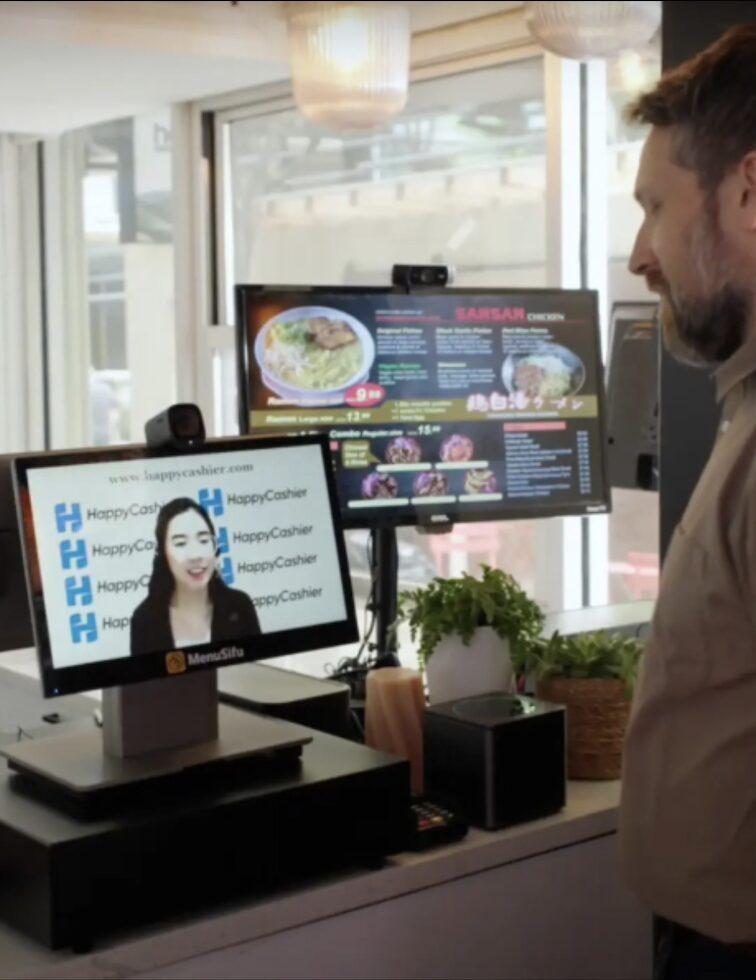In recent years, ice cream has gone beyond your typical vanilla, chocolate and strawberry.
Think, fried chicken and waffles, peking duck, foie gras PB&J or whiskey Lucky Charms.
At Coolhaus, a Los Angeles-based artisanal ice cream sandwich company, these are just some of the inventive, indulgent flavors customers can expect.
The concept arose some nine years ago when LA-native Natasha Case was working at Walt Disney Imagineering. Employing her architecture background, Case made ice cream sandwiches for an employee holiday bake sale. Though comprised of an ice cream scoop wedged in between two cookies, they were more than that, as she calls it: “Farchitecture” (food + architecture) creations, playing on famous architects and structures.
Realizing how much of a hit the combinations were, Case, along with Filipino-American Freya Estreller, soon transformed this hobby into a business venture.
The name Coolhaus itself plays on “Bauhaus” (an influential modernist design movement of the 1920s and 30s) and Rem Koolhaas (a famous Dutch architect and theorist). For architecture aficionados, there are sandwiches with pun-y titles, from Frank Berry (snickerdoodle cookies & strawberry ice cream) to Norman Bananas Foster (banana ice cream with butter-y rum reduction swirl).
Their big break came months later in 2009 when Case and Estreller bought a truck off of Craigslist and drove it to Indio, California to sell ice cream sandwiches at the annual Coachella Valley Music Festival, where over 100,000 people were in attendance.
“After Coachella, we went viral, so you could not ignore that there was an interest and demand for us to do this. That was an extreme example that you might not see all the time but really after that, when you’re just starting and trying to get something out there, you should be overwhelmed by the sales and not being able to keep up,” Case told the Asian Journal in a recent interview. “That’s when you know you’ve got something…if you’re just sitting around, waiting for sales to come, it’s the exact opposite of what it should be.”
From there, the duo began driving the truck to “hip” neighborhoods in the greater Los Angeles area, such as Venice, Santa Monica and downtown.
“Especially in the early days, our customer base was the young, tech-savvy type who were food adventurers,” Case said. “They had the energy and enthusiasm to seek us out to where we might be.”
In addition to the truck sales, Coolhaus became a go-to catering service for private parties and events throughout Southern California. The brand is also known for doing partnerships with fashion labels, movies, and various businesses.
“There’s no partnership or market channel that’s too outside the box for us,” Estreller said.
Like most entrepreneurs will attest to, starting off is no easy feat. Both Case and Estreller reflected that managing others was a challenge because of their young age, being 25 and 26 at the time, respectively.
“We were really young founders and some of our employees were older than us and more experienced at service and food. Why are they going to listen to you? Why are you giving authority if you don’t really have that much of a track record. I think it’s hard at first, you have to learn yourself as a manager,” Case said, adding that it’s about “social and people skills.”
Estreller added how it was important for entrepreneurs to not get stuck on “analysis-paralysis” when thinking about the business idea.
“People tend to get stuck there, thinking ‘I can’t do it,’ ‘I don’t have the experience’ or ‘I don’t have the money.’ There’s a way — if you’re really passionate about it and you can figure out a low-cost way to get to minimum viable product…there’s a way to put it out there and test it out, especially with technology these days,” she added.
Additionally, they remarked how most people thought “Coolhaus was started by guys” even though the branding is pink and silver and that the co-founders’ back stories were widely shared.
Estreller noted that being a leader and running a business as a female is inherent in her culture and upbringing.
“In Filipino culture, we have very strong women,” Estreller said, describing how she’s looked up to her mother’s dynamic, hands-on personality.
Business and life partners
In addition to being business partners, Case and Estreller began a romantic relationship early on while developing the company. Now married, they both remarked how being together for most of the day helped and how their different fields of expertise complemented one another.
Case — who is now the CEO of Coolhaus — was in charge of the creative, branding and marketing aspects, while Estreller was more on the operations and logistics side.
“At least for us, it was beneficial because 24/7, we were talking about Coolhaus and that really accelerated the growth of the business in the first four years I was [in the business],” Estreller narrated.
However, being in these two types of relationships also presented some bumps in the road.
“At the year four point, I personally started to feel a little burnt out, we were fighting a lot — not only would we talk about Coolhaus, but we would fight about it. Not only was it a realization for the both us that maybe that this wasn’t as beneficial as it was before. There was a turning point,” Estreller said.
In 2014, she moved on to launch Ludlows Cocktail Co., which sells prepackaged, all-natural craft cocktails and jello shots.
“I started my own company because I’m a masochist and that’s what entrepreneurs like us do. That’s been really helpful for our marriage,” she said. “Coolhaus is great but I love Natasha more than my business.”
Though some ventures fall after couples/business partners end their romantic relationships, Case and Estreller said Coolhaus has persisted because of how popular the brand is itself. As a couple, they still own a majority stake of the company.
“You have to be bigger than the brand and the brand has to be bigger than you. Luckily, Coolhaus is a brand that’s not only our faces and identities,” Case shared. “It’s bigger than just the who. Our relationship didn’t exist for the purpose of growing Coolhaus… If anything, having an Asian woman co-founder and being a same-sex couple — all these elements of diversity have only helped us.”
On occasion, however, Estreller will come on board as a consultant and help with any strategic moves.
“Freya gives great feedback even if she’s not here,” Case said. “She’s an influential voice in the business.”
Added Estreller, “They call me the ‘first lady of Coolhaus’ because I have [Natasha’s] ear every night.”
Soon, the couple will be welcoming their first child and are excited about entering motherhood.
“Because we own our own businesses, we’re very blessed that we get to take the necessary time off and we’ll see — I don’t know how long we’re going to take off. We’ll cross that bridge when we get there. It helped us formulate our policy on maternity leave at our companies. We started to look at it and the best practices of companies that we admire and we increased it,” Estreller said. (Currently, Coolhaus provides two months paid maternity leave, with partial pay for the third and fourth months).
Going forward
Nearing eight years in business, Coolhaus is staying relevant in the ice cream scene through consistently pushing boundaries and innovating new flavors and concepts.
“I really like that core principle of expressing yourself,” Estreller said. “No flavor or collaboration is too weird or kooky.”
Added Case, “What’s cool is that we can have an idea of something we want to do and within a few months, we can easily be selling it on the seasonal menu or just in a one-off in the shops or the trucks. Generally, there are a few ways this will come about: one is seeing interesting food trends or ingredients that are being used for cultural dishes.”
Another way is looking at cultural references and creating concoctions based on them. For example, recently an employee crafted a play on ‘Netflix & Chill,” using a white cheddar popcorn-infused base and Doritos.
As of late 2016, Coolhaus had a national fleet of 10 trucks and carts in LA, New York and Dallas and two brick and mortar shops in Culver City and Pasadena, and was being sold in over 5,000 retailers in all 50 states and some areas in Asia and the Middle East. (In Manila, the brand can be found at Landers Superstore.)
For new products at retail partners, the company examines which pints, sandwiches, and bars have large social media exposure and are best-sellers at the trucks and two stores.
“We still need a Filipino line,” Estreller remarked. “Where’s my halo-halo ice cream?”
In the past, the brand introduced ube ice cream to its lineup — way before the ingredient became so ubiquitous as it is today.
Despite all of the creative flavors, one continues to be the staple for many customers: the chocolate chip Cookie + Tahitian vanilla bean ice cream sandwich.
“Everyone loves to try — people will stand there and try five things, but they’ll always come back to the classic. You shouldn’t have vanilla shame, people will say they’re boring. But actually, vanilla is the flavor where you have the least flavor fatigue for. It’s a scientific thing. There’s a reason why vanilla is so popular,” Estreller said.
In the next three to five years, customers can expect more flavors and products and for Coolhaus to be sold at more retail locations.
“There’s so much to do with our brand. I think what’s great about it — it’s almost like a lens of how you see the world, rather than this is [simply] ice cream,” Case said. “It’s almost like, Coolhaus means to ‘express yourself through ice cream’ because we’re constantly coming out with unique, innovative products and flavors that you wouldn’t necessarily even think could meet a frozen dessert profile and keeping things exciting, playful and whimsical.”
Despite being surrounded by cookies and ice cream all day, Case said it’s taught them about moderation and balance.
“I rarely eat a whole serving, but almost every day, I eat a little ice cream and…cookies,” she said. “This kind of business is not a traditional desk job, you are on your toes all the time, so even though there are thousands of gallons of ice cream and thousands of cookies around, it’s a physical job. You’re running around, you’re meeting and talking to people — even if you’re scooping, it’s very aerobic. I’m so not tired of cookies or ice cream, I still look forward to every time there’s a tasting.”
“Now that I’m pregnant, I’ve probably eaten more Coolhaus in these last seven months than I have in the last seven years,” Estreller joked.





